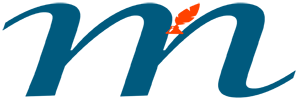Newfoundland and Labrador (/ˌnjuːfənˈlænd …
Newfoundland and Labrador comprises the insular region of Newfoundland and the continental region of Labrador to the northwest. About 92% of the province’s population live on the island of Newfoundland (and its neighbouring smaller islands), of whom more than half live on the Avalon Peninsula.
The province is Canada’s most linguistically homogeneous. Here 97.0% of residents speak English (Newfoundland English) as their mother tongue( the 2016 census). Historically, Newfoundland was also home to unique varieties of French and Irish, as well as the extinct Beothuk language. In Labrador, the indigenous languages Innu-aimun and Inuktitut are also spoken.
Newfoundland and Labrador has more interesting things to know. Know them by taking the following quiz:
Newfoundland and Labrador Quiz
Select the right answer by clicking one of each question of Newfoundland and Labrador Quiz
Results
#1. What percentage of Canada’s Aboriginal people live in the province?
#2. King Henry VII of England referred to the land discovered by John Cabot in 1497 as the “New Found Launde.”
#3. The provincial motto of Newfoundland and Labrador is _________.
#4. Newfoundland and Labrador has a different, special time zone that exists only for this province.
#5. The Aboriginal inhabitants of Newfoundland and Labrador were______.
#6. What region is Newfoundland and Labrador in?
#7. The largest city of Newfoundland and Labrador is ______.
#8. What strait separates the province into two geographical divisions, Labrador, a large land mass connected to mainland Canada, and Newfoundland, an island in the Atlantic Ocean?
#9. What time zone is Newfoundland and Labrador in?
#10. Which of the following is true of the famous heritage site, “Cape Spear and its iconic lighthouse” of Newfoundland?
#11. The fishing industry remains an important part of the provincial economy.
#12. The total area of Newfoundland and Labrador is _________.
*
| Area | |
|---|---|
| • Total | 405,720 km2(156,650 sq mi) |
| • Land | 373,872 km2(144,353 sq mi) |
| • Water | 31,340 km2(12,100 sq mi) 7.7% |
| Area rank | Ranked 10th |
| 4.1% of Canada | |
#13. The total population of Newfoundland and Labrador is _________.
#14. The people of Newfoundland were granted the right to vote for an elected assembly in ______.
#15. Which year did Newfoundland and Labrador join the Confederation?
*March 31, 1949, and it was the last province to join the Confederation.
#16. Who is the current Premier of Newfoundland and Labrador?
*The current Premier of Newfoundland and Labrador is Dwight Ball, since December 14, 2015.
#17. The partridge (Lagopus sp) or ptarmigan is the provincial game bird of Newfoundland.
#18. The provincial tree of Newfoundland and Labrador is _________.
*The black spruce (Picea mariana), also known as the bog spruce, was designated the provincial tree in 1993. Although its foliage is bluish-green, it is called the “black” spruce to distinguish it from other types of spruce trees. It is the most abundant tree in Labrador and appears on the Labrador flag.
#19. Which of the following is a world heritage site in Newfoundland & Labrador?
#20. The people from Newfoundland are called______.
#21. Newfoundland became the tenth province of Canada in on March 31, 1949.
#22. The provincial flower of Newfoundland and Labrador is _________.
*The insect-eating pitcher plant (Sarracenia purpurea L.) was adopted as Newfoundland and Labrador’s floral emblem in 1954. It is the most unusual of Canada’s official flowers. It was first chosen as a symbol of Newfoundland by Queen Victoria, to be engraved on the newly-minted Newfoundland penny. It was used on the island’s coinage until 1938.
#23. Who is the current Lieutenant Governor of Newfoundland and Labrador?
*The current, and 14th, Lieutenant Governor of Newfoundland and Labrador is Judy Foote, who has served in the role since 3 May 2018.
#24. The provincial bird of Newfoundland and Labrador is _________.
*The Atlantic puffin (Fratercula arctica) is a well-known symbol of Newfoundland and Labrador. Over 95 percent of all the puffins in North America breed on the coasts of the province. The largest colony can be seen in the Witless Bay Ecological Reserve, south of St. John’s.
#25. Who were these early explorers of the province?
#26. The provincial licence plate motto of Newfoundland and Labrador is__________.
#27. Human habitation in Newfoundland and Labrador can be traced back about 1,000 years.
*False. Human habitation in Newfoundland and Labrador can be traced back about 9,000 years.
#28. What is the capital of Newfoundland and Labrador? ? also the most populous city in the province
*With a population of 108,860, St. John’s is the capital and the most populous city in Newfoundland and Labrador.


